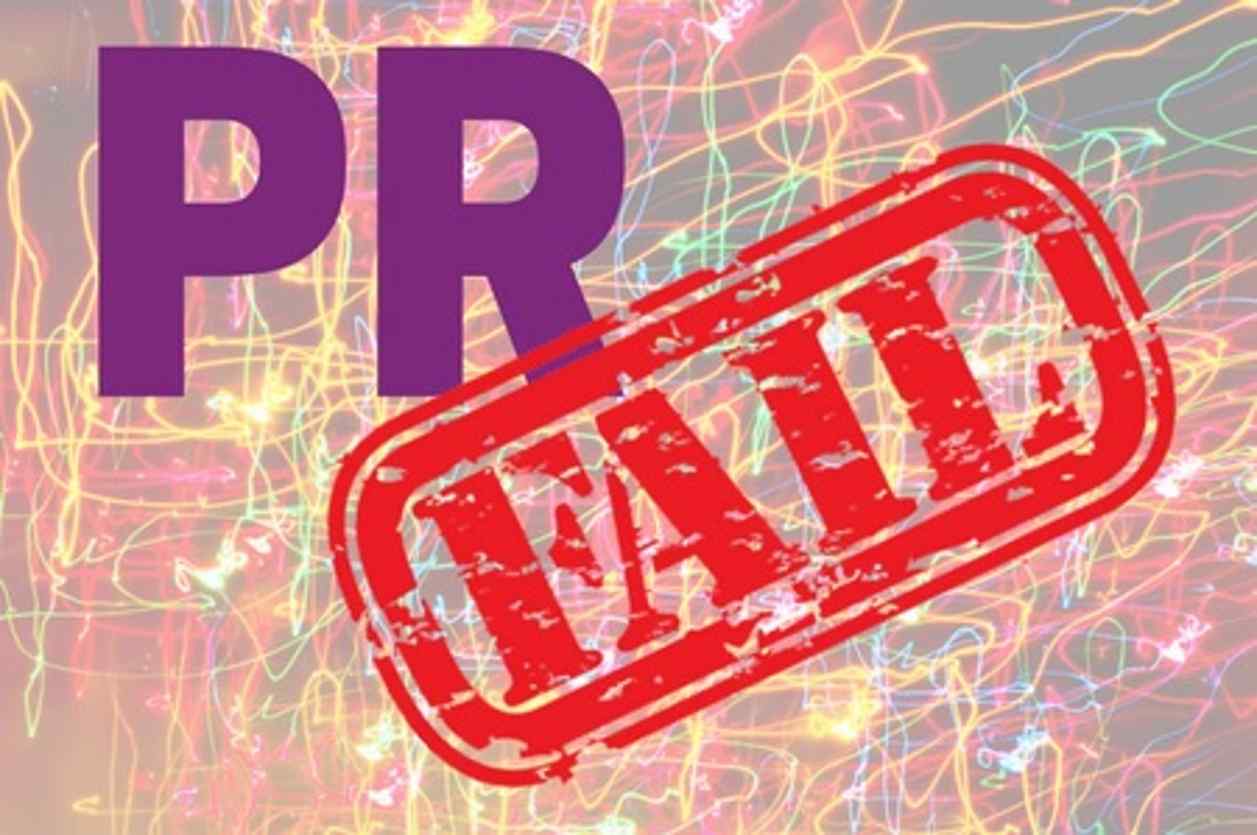In the digital marketing and media world, the quest for effective Search Engine Optimisation (SEO) strategies remains paramount. Public Relations (PR) distribution has long been considered a valuable tool to boost online visibility.
The influence of digitalisation extends to press releases, with a current trend showing that, as of 2023, 90% of all press releases are directed towards online or digital media outlets.
This reflects a notable 14% surge compared to the previous year. In contrast, magazines received 66% of press release pitches, while TV stations lagged even further at 52%.
These PR statistics present both advantages and challenges. The prevalence of online press releases signifies a streamlined and efficient distribution process. However, it also introduces heightened competition compared to other media channels.
The Critical PR Examination
However, a critical examination reveals that the mass distribution of press releases may be almost pointless for SEO, primarily due to the prevalence of issues such as duplicate content and canonical problems, resulting in poor or negligible return on Investment (ROI).
Once hailed as an effective method for securing links and garnering brand visibility, press releases underwent a transformation that made PR advertising more challenging.
The shift occurred as some platforms began treating press releases akin to guest posts, refusing to publish them. Concerns about duplicate content, especially if previously featured on other sites, added another layer of difficulty.
A perception emerged that press releases with embedded links were bordering on spam, leading some marketers to abandon this strategy altogether.
The potential downside became evident – sending out a multitude of press releases could result in an abundance of duplicate content, diminishing their overall impact. Simultaneously, the proliferation of press release usage surged just before a significant downturn.
The increased density of press releases made it tougher for PR marketing efforts since a vast number of individuals vied for a limited number of publication opportunities. The competitive landscape posed challenges for those looking to secure valuable slots on reputable sites.
Despite being disregarded by some in recent years, press releases remain potent tools, often indispensable for various industries. They offer an acceptable avenue for mass communication and can significantly boost brand awareness and product visibility.
However, businesses need not undertake the task alone; services like PR Newswire, PRWeb, or Business Wire can handle press release distribution efficiently. Leveraging their reputation and reach, these companies can syndicate press releases to notable platforms such as Yahoo Finance or Google News.
In a digital environment where a single misstep with content can lead to a demotion in search rankings, it is crucial to tread carefully. Businesses must ensure they are taking the right measures and not inadvertently sabotaging their efforts in a landscape where precision is paramount.
No SEO Value.
Syndicated content is not coverage and does not provide a backlink either. It WILL be lost in the depths of pagination without ever passing on any ‘link-juice’. Most PR distribution will only yield no follow hyperlinks along with your PR not even making it into the search engines.
Duplicate Content Dilemma
One of the major hurdles faced by PR distribution for SEO is the duplicate content dilemma. When a press release is distributed to numerous outlets, it often results in the publication of identical or substantially similar content across various platforms.
Search engines, particularly Google, are designed to prioritize unique and relevant content to enhance user experience. Consequently, the presence of duplicate content can lead search engines to deindex the majority of press releases, rendering them virtually invisible to online users.
Canonicalization Woes
Canonicalization, the process by which search engines determine the preferred version of a page when faced with duplicate content, becomes a significant challenge in the realm of mass PR distribution.
Press releases, being disseminated across a multitude of websites, frequently encounter canonicalisation issues. Search engines may struggle to identify the primary source or the most authoritative version of the content, resulting in confusion and potential deindexing.
The Deindexing Conundrum
Mass PR distribution’s Achilles’ heel lies in the swift deindexing of press releases by search engines. Duplicate content and canonical problems contribute to search engines flagging these releases as low-quality or irrelevant, ultimately relegating them to the depths of search engine result pages (SERPs).
In turn, rapid deindexing undermines the very purpose of PR distribution for SEO, as the intended visibility and impact on search rankings are significantly compromised.
The Smoke And Mirrors Of Mass PR Distribution Services
he smoke and mirrors of mass PR distribution services – they promise you the moon, but what you often get is a pitch-black sky with your press release lost in the abyss of non-indexed oblivion. It’s a charade of distribution that lacks the transparency it so boldly claims.
You see, these services boast about spreading your news to over 500 platforms, but what they conveniently forget to mention is that the majority of these platforms are practically invisible to search engines. It’s like shouting into the void and expecting an echo.
- The Dirty Little Secret.
The dirty little secret is that search engines have a particular aversion to duplicate content and canonical issues, and most of these PR distribution platforms seem to be blissfully ignorant of that fact.
Your carefully crafted press release, which you hoped would make waves across the digital landscape, might as well be tucked away in a dusty corner of the internet, unnoticed and unindexed.
The fix? It’s embarrassingly simple. If these platforms would just take the time to set each article as “canonical” in their SEO settings, a significant chunk of the distribution might actually see the light of day on search engine result pages. But alas, it seems like a concept too complex for the wizards behind the curtain.
So here’s the reality check: the mass PR distribution services, in their current state, are more like a magician’s illusion – grandiose on the surface but lacking substance when you peel back the layers.
If you genuinely want your news to have an impact and be discoverable, the key is to abandon the mass-distribution circus. Instead, consider the radical notion of sending your carefully crafted, unique article to a single news publication at a time.
It’s not as flashy, but at least your message won’t be lost in the black hole of digital irrelevance. Quality over quantity, my friend – it’s time to make your PR strategy as unique as your story.
Poor to No ROI
The culmination of duplicate content and canonicalization challenges often leads to a dismal or non-existent Return on Investment.
Companies investing resources in mass PR distribution campaigns may find their efforts fruitless, as the deindexing of press releases diminishes the visibility, organic traffic, and overall SEO benefits they hoped to achieve.
This begs the question of whether the traditional approach to PR distribution aligns with the contemporary SEO landscape.
Public Relations (PR) Syndication
Public Relations (PR) syndication involves distributing press releases or articles to various websites, news outlets, and online platforms to increase visibility and reach a wider audience.
While PR syndication can be an effective strategy for promoting a brand or message, it can also lead to duplicate content issues in search engines. Here’s how:
- Same Content Across Multiple Sites: When a press release or article is syndicated, it is often published on multiple websites. If the content is identical on all these platforms, search engines may view it as duplicate content.
Search engines aim to provide diverse and relevant results to users, and having the same content appearing in multiple locations can hinder their ability to do so. - Search Engine Algorithms Penalise Duplicate Content: Search engines, such as Google, employ algorithms to detect and address duplicate content issues.
When duplicate content is identified, search engines may choose one version of the content to display in search results, while others may be pushed down or omitted. In some cases, search engines may even penalize websites with duplicate content, impacting their overall search rankings. - Confusion for Search Engines: Duplicate content can confuse search engines when determining which version to display in search results.
This confusion may result in lower rankings for the duplicated content or, in extreme cases, the exclusion of the content from search results altogether. - Dilution of Authority and Backlinks: Search engines consider the authority and relevance of a page when determining its ranking.
When the same content is spread across multiple sites, the authority and backlinks that could have been consolidated on a single page are distributed.
This dilution of authority may impact the overall ranking potential of the content. Although, this is not completely understood as search engine algorithms remain a closely guarded secret.
To mitigate these issues, PR professionals and content creators can take the following steps:
- Use Canonical Tags: Implement canonical tags to specify the preferred version of the content. This helps search engines understand which version to prioritise in search results.
- Modify Content for Each Platform: While the core message can remain the same, consider making slight modifications to the content when syndicating it to different platforms. This can help avoid identical duplicate content issues.
- Prioritise High-Authority Platforms: Choose reputable and high-authority platforms for syndication to ensure that search engines prioritize the version of the content on those platforms.
- Monitor and Adjust: Regularly monitor the performance of syndicated content and make adjustments as needed. If duplicate content issues are detected, take corrective measures promptly.
Don’t Syndicate PR On Your Own Website. Ever
Avoid reposting your syndicated press releases on your website to prevent Google from detecting duplicate content, which may adversely impact your search rankings. Instead, consider crafting a more comprehensive internal marketing approach.
Rather than relying solely on press releases, develop content with greater substance. For instance, create a blog post that delves into the details covered in the press release, offering additional insights.
Construct a dedicated landing page tailored to provide customers with specific information, strategically integrated into a sales funnel for preorders or purchases.
Visitors to your site are typically seeking more in-depth and detailed content, not just press releases. By linking to your published press releases within these more substantial pieces, you avoid presenting redundant information and ensure a more engaging experience for your audience.
After all, those who follow press release links to your site should encounter fresh and enriching content, enhancing their overall interaction with your brand.
By being mindful of these considerations, PR professionals can harness the benefits of syndication while minimising the risk of duplicate content issues in search engines.
While mass PR distribution has been a staple in the arsenal of digital marketers, the landscape of SEO is dynamic, and strategies must adapt to the evolving algorithms of search engines.
The prevalence of duplicate content and canonical issues in PR distribution significantly undermines its effectiveness for SEO, resulting in poor to no ROI.
Businesses seeking to enhance their online presence should carefully reconsider the role of mass PR distribution and explore alternative, more SEO-friendly approaches to ensure their efforts yield tangible results in the competitive media marketplace.







